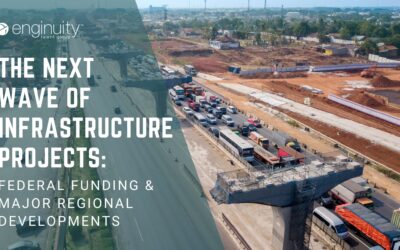In engineering and construction, the term “talent shortage” is often thrown around to describe the lack of available workers, but the problem is far more nuanced than simply having too few people on staff. The real crisis lies in the mid-level ranks, those professionals with enough years in the field to have mastered technical and managerial skills but who haven’t yet reached the executive tier. These individuals are the bridge between high-level vision and day-to-day execution, ensuring that projects progress smoothly, budgets stay intact, and teams remain motivated. Unfortunately, a combination of retirements, stalled career pipelines, and competition from other industries has left a gaping hole in this crucial segment. Firms are finding that while they can hire fresh graduates and retain senior leaders, they struggle to maintain the middle layer that keeps operations efficient and scalable. Addressing this challenge requires not just reactive hiring, but a deliberate, strategic overhaul of how firms recruit, train, and retain these vital professionals.
Understanding the Scope of the Mid-Level Gap
Solving the mid-level talent shortage begins with accurately defining its scope. This requires more than a vague acknowledgment that “we need more people”; it involves data-driven workforce analysis. Firms should assess internal staffing levels, turnover rates, and project performance metrics to pinpoint where the greatest deficits lie. Is the bottleneck in civil engineering project leads? Are electrical project managers in short supply? Or is the issue with site supervisors who can balance compliance with productivity? Without this clarity, any recruitment or development initiative risks being misaligned with the actual needs.
The impact of this gap is often seen indirectly. Senior leaders might find themselves stepping into operational roles they’ve long since moved beyond, while junior employees may lack proper oversight and mentorship. This misalignment not only slows projects but can also lead to burnout at both ends of the hierarchy. Industry-wide data suggests that this shortage is not isolated to one market, global trends show similar deficits in North America, Europe, and parts of Asia-Pacific. Recognizing that the issue is systemic underscores the importance of proactive, structured solutions rather than short-term fixes.
Causes Behind the Shortage
The roots of the mid-level shortage are intertwined with broader demographic and economic shifts. The retirement wave of Baby Boomer engineers and construction managers has been building for years, and it’s now cresting at a time when demand for infrastructure, renewable energy projects, and commercial development is high. These seasoned professionals take with them not only their technical expertise but also invaluable institutional knowledge that can’t be easily replaced.
Economic disruptions have also played a role. The hiring freezes and reduced recruitment efforts during the 2008 financial crisis and, more recently, the pandemic years, created a career “missing middle” where fewer professionals entered the industry or advanced through the ranks. On top of that, adjacent industries such as tech, advanced manufacturing, and renewable energy are actively recruiting engineering and project management talent, offering competitive compensation and often more flexible working conditions. Some mid-level professionals exit the industry entirely, driven by burnout from excessive travel, long hours, and high-pressure deadlines. Combined, these factors create a talent scarcity that is both acute and persistent.
The Cost of Leaving the Gap Unaddressed
Failing to resolve the mid-level talent shortage carries consequences that go beyond staffing headaches, it directly impacts a firm’s competitiveness and profitability. Project delays are one of the most obvious outcomes, with timelines slipping due to slower decision-making and the inability to delegate effectively. These delays often translate into budget overruns, damaging client trust and eroding profit margins.
Quality control is another casualty. Without experienced mid-level managers to oversee execution, there’s an increased risk of errors, rework, and compliance violations. The absence of this talent also hampers a firm’s ability to scale. Without a strong middle layer, even the most visionary leadership teams find themselves bottlenecked, unable to take on new projects without overextending their current staff. In the long term, an unaddressed mid-level gap threatens succession planning. If there aren’t enough qualified individuals ready to step into senior roles, leadership transitions become more disruptive and risky, potentially destabilizing entire divisions.
Recruitment Strategies that Target Mid-Level Professionals
Mid-level professionals are often passive candidates, they aren’t scanning job boards daily, but they may be open to the right opportunity if it aligns with their career goals. This makes traditional recruitment methods less effective. Instead, firms must invest in relationship-based recruitment strategies. This can include attending niche industry events, leveraging alumni networks, and engaging with professional associations where these individuals are active.
Another critical component is crafting job descriptions that speak directly to mid-level candidates’ priorities. These professionals are often seeking opportunities for career growth, exposure to diverse project types, and roles that offer a balance between fieldwork and strategic input. Highlighting mentorship opportunities, clear advancement pathways, and access to innovative projects can set your firm apart. Partnering with specialized recruiters who understand the nuances of engineering and construction roles can shorten the hiring cycle and improve candidate quality. In some cases, companies may also work with an owner’s representative to provide project oversight and coordination across teams. These types of partnerships can help relieve pressure on mid-level staff and keep timelines on track without overextending internal resources.
Developing Internal Talent Pipelines
While external recruitment is necessary, developing talent from within can be the most sustainable way to close the gap. This begins with identifying high-potential junior staff early in their careers and providing them with a roadmap to advancement. Such a roadmap might include specific certifications, leadership training programs, and exposure to increasingly complex project responsibilities.
Mentorship programs are particularly valuable, as they allow less experienced employees to learn directly from current mid-level leaders. This not only accelerates skill development but also preserves institutional knowledge. Cross-training can further strengthen internal pipelines, enabling employees to work across disciplines, such as a civil engineer gaining exposure to electrical systems, so they become more versatile problem-solvers. These programs also improve retention, as employees are far more likely to stay with an organization that actively invests in their long-term success. In the competitive world of engineering and construction, firms that master internal talent development can weather industry fluctuations with greater stability.
Leveraging Technology to Reduce Workload Strain
Technology can serve as a force multiplier for mid-level talent, enabling professionals to achieve more with fewer resources. Tools such as Building Information Modeling (BIM), cloud-based collaboration platforms, and AI-driven project scheduling have transformed the way engineering and construction teams operate. These technologies streamline communication between dispersed project stakeholders, automatically update design revisions, and flag potential conflicts before they escalate into costly delays.
For mid-level professionals, the benefits extend beyond time savings. Automating repetitive administrative tasks like compliance tracking, procurement status updates, and materials inventory management frees them to focus on complex decision-making and leadership. However, the success of these tools hinges on proper implementation. Without comprehensive training and ongoing support, even the most sophisticated software can become a source of frustration rather than efficiency. Firms that strategically integrate technology, ensuring it complements rather than complicates workflows, will empower their mid-level staff to operate at peak effectiveness.
Retention Strategies That Actually Work
Attracting mid-level professionals is challenging, but retaining them requires an equally deliberate strategy. High-performing employees at this stage of their careers often value stability, professional growth, and recognition as much as, if not more than, salary increases. Offering career development plans, leadership training programs, and opportunities to manage high-profile projects signals to these individuals that they are a vital part of the company’s future.
Non-financial incentives play an equally significant role in retention. Flexible scheduling options, reasonable travel expectations, and initiatives to improve work-life balance help reduce burnout and increase loyalty. Regular recognition of contributions, whether through formal awards or informal acknowledgments in team meetings, fosters a culture where employees feel seen and appreciated. Retention is ultimately about engagement. When mid-level professionals feel invested in the company’s vision and see a tangible path for advancement, they are far less likely to seek opportunities elsewhere.
Partnerships with Educational Institutions
Forging strong relationships with universities, technical colleges, and trade schools is a proactive strategy to address the mid-level gap over the long term. These partnerships can yield tailored programs that align academic curricula with industry needs, ensuring graduates enter the workforce prepared for practical, real-world challenges. Co-op programs and extended internships offer students early exposure to engineering and construction environments, building familiarity and loyalty before they graduate.
Some firms take this a step further by co-developing specialized certification programs or sponsoring capstone projects that solve real industry problems. These collaborations not only produce candidates with relevant skills but also strengthen the employer brand among emerging professionals. Over time, this approach creates a steady influx of high-potential employees who can be nurtured into mid-level roles faster than traditional career paths might allow.
Cross-Industry Recruitment Opportunities
The skills needed for success in engineering and construction aren’t exclusive to these sectors. Project management expertise, regulatory compliance experience, and advanced technical problem-solving can often be found in professionals from aerospace, logistics, energy, and manufacturing. By broadening recruitment horizons, firms can tap into an entirely new pool of candidates capable of adapting their knowledge to construction and engineering contexts.
Bringing in talent from outside the industry also injects fresh perspectives that can spark innovation. For instance, a project manager from the aerospace sector might introduce process control methodologies that improve efficiency on large-scale infrastructure projects. While cross-industry hires require onboarding to bridge knowledge gaps, the diversity of thought they bring can enhance problem-solving and adaptability, two qualities in high demand for mid-level positions.
Succession Planning as a Long-Term Safeguard
Succession planning is the ultimate insurance policy against talent shortages, yet it’s often overlooked until a crisis forces the issue. By identifying future leaders early and providing them with a structured development plan, firms ensure that when senior positions open up, they have a bench of mid-level professionals ready to step in. This includes giving emerging leaders opportunities to manage teams, oversee budgets, and interact directly with clients well before they take on a formal leadership role.
Effective succession planning also focuses on knowledge transfer. Shadowing programs, documentation of best practices, and structured mentorship help ensure that critical expertise doesn’t leave the organization when senior staff retire or move on. By making succession planning an ongoing priority rather than a reactive measure, firms create a sustainable leadership pipeline that safeguards project continuity and organizational stability.
Securing the Middle Ground for Long-Term Success
The mid-level talent gap is not a passing inconvenience; it is a structural issue that can hinder growth, profitability, and client satisfaction for years if left unaddressed. Closing this gap demands more than recruitment alone; it requires a multifaceted approach that combines targeted hiring, robust internal training, thoughtful retention efforts, technology integration, and proactive succession planning. Firms that take this challenge seriously will see immediate benefits in operational efficiency and team morale, while also positioning themselves to thrive in an increasingly competitive marketplace. In engineering and construction, where the stakes are high and deadlines are unforgiving, a strong and stable mid-level workforce isn’t just an advantage, it’s the backbone of long-term success.







0 Comments